TorkLift SuperHitch Everest Weight Distribution System - No Shank - 30,000 lbs GTW, 3,000 lbs TW
Thank you! Your comment has been submitted successfully. You should be able to view your question/comment here within a few days.
Error submitting comment. Please try again momentarily.
- All Info
- Reviews (6)
- Q & A (0)
- Photos
- Used (1)
TorkLift Weight Distribution Hitch - TLWD1000
- 1600 lbs
- 1700 lbs
- 1800 lbs
- 1900 lbs
- 2000 lbs
- 2100 lbs
- 2200 lbs
- 2300 lbs
- 2400 lbs
- Fits 2 Inch Hitch
- Fits 2-1/2 Inch Hitch
- WD Only
- Allows Backing Up
- TorkLift
- Shank Not Included
- Trunnion Bar
- Top-Mount
Get the most out of your TorkLift SuperHitch Magnum dual-receiver trailer hitch with this heavy-duty weight distribution system. Adjustable collar-style chain brackets and hydraulic assist make setup a snap. Hitch ball and shank sold separately.
Features:
- Evenly spreads out your tongue weight among all the axles of your tow vehicle and trailer
- Works exclusively with your SuperHitch Magnum dual-receiver trailer hitch (sold separately)
- Levels out your ride to restore control and stability
- Lets you tow to the max capacity of your hitch
- Hydraulic-assist jack makes connecting spring bars a snap
- Removes the danger of manually snapping up highly tensioned bars
- Desired head tilt is achieved with easy-to-adjust, square spacers
- Pre-drilled holes in hitch head let you install a friction sway control (sold separately) on either side
- Sturdy, round spring bars attach like trunnion bars
- Provides more ground clearance than the standard round bars
- Convenient, adjustable brackets let you easily clear obstacles on your frame
- Clamp or bolt chain brackets to your trailer frame with the included hardware
- Slide the adjustable collar along the spring bar and tighten the built-in hex bolt to secure it in place
- Accommodates frame-mounted obstacles like battery boxes, tool boxes, or generators
- Grease zerks make maintenance easy
- Powder coated steel resists corrosion
- System includes head assembly, spring bars, brackets and chains, hydraulic jack with handle, and necessary hardware
- Adjustable shank (LM9010 or TLM9011) and hitch ball with 1-1/4" shank sold separately
- Made in the USA
Specs:
- Application: TorkLift SuperHitch Magnum dual-receiver trailer hitches
- Tongue weight: 1,500 lbs - 3,000 lbs
- Maximum gross towing weight: 30,000 lbs
- Hitch ball hole diameter: 1-1/4"
- Lifetime warranty
| Included w/ TLWD1000 | Required - Sold Separately | Optional Add-Ons |
|---|---|---|
|
|
|
Pro Tip: Before you invest in a weight distribution hitch, make sure your cargo is evenly loaded in your trailer to keep the weight balanced. If you still have a hard time even after balancing your tongue weight, a weight distribution hitch should help.
Hydraulic Assist for Fast, Easy Setup
TorkLift has taken virtually all of the effort out of the setup process by including a bottle jack with the Everest weight distribution system.

Just insert the end of one of the spring bars into the specially designed Z-Bar Lifter, and jack it up.

Once the bar is raised to the desired height, slip the proper chain link between the tabs on the chain bracket and install the pin and clip to secure it in place. Release the pressure from the jack, repeat the process on the other side of your trailer, and you're good to tow!
Adjustable Brackets Work Around Frame-Mounted Obstacles
Most weight distribution systems don't give you much latitude in where you install the brackets.

Typically, the length of the spring bars - and the fact that the chains are bolted to the end of them - determines where the brackets will install on your trailer frame because the chains need to hang perpendicular to the frame for the system to work properly. This can make it really hard to install a system if you have something like a tool box, battery box, or other frame-mounted accessory already mounted in the spot where the brackets are supposed to go.

With the Everest, you have a bit more freedom in where you place the mounting brackets on your trailer frame. Let's say you need them to sit closer to your coupler because your tool box is in the way. Just install them where you want, and then slide the adjustable collars along the spring bars until the chains are hanging perpendicular.

As long as the collars are within 8" of the end of the bar, you should be good to go. When you've found the perfect spot, just secure each collar to the spring bar by tightening the integrated hex bolts, and you're all set.
Adjusting the Head Tilt
Instead of washers, the Everest has these square spacers that let you adjust the head tilt during installation.

To use them, first mount the head to a TorkLift SuperHitch adjustable shank (TLM9010 or TLM9011 - sold separately) using only the bottom bolt. Then, place the spacers on either side of the head, using the upper hex bolt to hold them in place. The top bolt hole on the system head is shaped like an oval, allowing for a wide range of adjustability. Flip and rotate the spacers to 1 of 3 positions until you've achieved the desired head tilt.
Tech Tip: Make sure that each spacer is snug between the 2 weld stops on the head assembly. It should not rise not above the ball platform.
Why Use a Weight Distribution Hitch?

- Prevents uneven tire wear on your vehicle and trailer
- Keeps the rear of your tow vehicle from sagging
- Lets you tow to the max capacity of your trailer hitch
- Stops your headlights from pointing up at the sky
- Gives you control over steering your rig
Selecting the Right Weight Distribution System
- Think "Goldilocks"
- If you go for overbuilt, you'll have a rigid ride
- If it's not strong enough, it's virtually useless
- Let your tongue weight be your guide
Your tongue weight is the first thing you need to know when figuring out which weight distribution system you need. Most people think that if they get the highest-rated system possible, it'll be smooth sailing. But actually, this will create a rigid ride and a bouncing trailer. On the other hand, if the system isn't strong enough, it won't be able to distribute the weight properly, making it virtually useless.
Once you know your trailer's tongue weight, add it to the weight of the cargo behind the rear axle of your tow vehicle. Then just choose a weight distribution system rated for that combined tongue weight.
WD1000 Tork Lift Super Hitch Everest Weight Distribution Hitch - 30,000 lbs
Customer Satisfaction Score:
71% were satisfied with this product
29% of customers were not satisfied
- etrailer mistake
- Product did not meet expectations
- Wrong item was ordered
Ratings & Reviews
4.7
6 reviews
This product is heavy duty. However, forklift didn’t write a good installation manual. Here are some examples: 1) the instructions have you measure the trailer and tow vehicle but never tell you what to do with the measurements; 2) the instructions tell you to determine the proper angle for the ball and distribution bars, but the manual doesn’t say how to determine this angle; videos on torklift’s website also don’t show the angle needed.
I installed this on a camp trailer and the small jack torklift includes for lifting the bars was too small. It doesn’t have enough lift height to get the bars into position.

All my trailers are work-pigs as are the trucks which tow them. Even though we don't abuse our equipment, if there's a breaking point, we will test those limits. A salute to the manufacturer. Like a "Timex", it just keeps on ticking. We say "Thank-you" For a product that stands the test of time & real work.!!
This seemed like a great hitch system but the weight of it is extreme and the additional components of it also make it super heavy
See what our Experts say about this TorkLift Weight Distribution Hitch
- Weight Distribution Hitch that Can Be Used with Trailer that Has 2,400 lbs Tongue WeightWe have the Everest Weight Distribution System from Torklift part # TLWD1000 that can be used with 2,400 lbs of tongue weight like you have. The shank you'd need to use this with is the part # TLM9010 and the hitch you'd need to have installed on your 2020 Chevy Silverado 3500 is the # TL74FR. There isn't a different option out there that would work so this would be only option.
view full answer... - Recommended WD System for a 17,000 lb GVWR Trailer Towed by a 2017 Chevrolet Silverado 2500When choosing a Weight Distribution (WD) system you will want to find one with a Tongue Weight (TW) range that the Total Tongue Weight (TTW) of your towing setup falls in the middle of. To find the TTW of your towing setup you will need to add the TW of your fully loaded and ready-to-go trailer along with the weight of any cargo behind the rear axle of your tow vehicle. Keep in mind that a properly loaded trailer will have a TW that is 10-15% of the loaded weight of your trailer. Since...
view full answer... - Weight Distribution System Needed for a Trailer with a Tongue Weight of 2,300 lbs.If the loaded tongue weight (TW) of your trailer is around 2,300 lbs then any weight distribution (WD) system that is rated for a max of 1,200 lbs TW will not be strong enough to help out at all. Check your TW to ensure that it is 10-15% of the loaded weight of your trailer. If it isn't you need to move stuff around until you achieve the 10-15% area. If it is already 10-15% of the loaded weight of your trailer then the only WD system that we have that will help is the TorkLift SuperHitch...
view full answer... - Recommended TorkLift SuperHitch for a 2018 Ram 3500 Cab and Chassis Yes, it is! The TorkLift SuperHitch Magnum Trailer Hitch item # TL49YR has been confirmed to fit the Cab and Chassis models of the 2018 Ram 3500. This hitch comes with both a 2" and a 2-1/2" receiver. It has a 20,000 lbs towing capacity that can be increased to a massive 30,000 lbs when you use the Everest Weight Distribution System item # TLWD1000 and item # TLM9010.
view full answer... - TorkLift 48" Extension For A 2019 GMC Sierra 3500HD Denali With 2-1/2" Factory ReceiverTo use a TorkLift 48" hitch extender you will have to change out your receiver on your 2019 GMC Sierra 3500HD Denali. The TorkLift Cannon Hitch Extension # TLE1648 will only fit the 3" receiver that comes on the Ford Super Duty trucks. To find the right TorkLift receiver that will allow you to use a 48" TorkLift SuperTruss Hitch Extension # TLE1548 you need to determine what bed length you have as well as what the maximum weight is that you would use the receiver to tow. 6-1/2' Bed...
view full answer... - Recommended 25,000 Pound Trailer Hitch Receiver for 2016 Ford F-550 Cab and ChassisThe only hitch that is capable of handling 25,000 lbs for your 2016 Ford F-550 Cab and Chassis is the TorkLift SuperHitch Magnum Trailer Hitch Receiver # TLF1003-30. This hitch has a 2-1/2" and 2" receiver with a maximum gross trailer weight of 20,000 lbs and maximum tongue weight of 2,500 lbs. In order to be able to tow 25,000 lbs, you would need to use the TorkLift SuperHitch Everest Weight Distribution System # TLWD1000 which would increase the gross trailer weight to 30,000 lbs and...
view full answer... - Highest Capacity Hitch and Weight Distribution System for a 2021 Chevy Silverado 3500Our highest capacity hitch for your 2021 Chevy Silverado 3500 Dually is the TorkLift SuperHitch Magnum Trailer Hitch Receiver item # TL74FR. This custom fit hitch bolts directly to your Silverado's frame with included hardware. It includes both a 2" and a 2-1/2" receiver. This hitch has a maximum gross trailer weight of 20,000 lbs that goes up to 30,000 lbs when used with a weight distribution system. For a compatible weight distribution hitch you will want the Adjustable Shank for TorkLift...
view full answer... - Will TorkLift SuperHitch Magnum Trailer Hitch Receiver Fit a 2019 Ram 2500 Power WagonYes, the TorkLift SuperHitch Magnum Trailer Hitch Receiver # TLD1109-30 will fit your 2019 RAM 2500 Power Wagon with the 6-1/2' bed. According to the installation instructions no modification of the spare tire location/support is needed. The receiver actually sits directly below the OEM receiver on your pickup. I have attached a photo of the TorkLift SuperHitch Original Trailer Hitch Receiver # TLD1108 on a 2018 Ram 3500 that you can reference. This isn't the exact same trailer hitch but...
view full answer... - Recommended TorkLift Hitch and Extension for a 2024 Chevy Silverado 3500 You're welcome Chris! Sounds like you've more then got the hitch covered. I can not think of a better option then the TorkLift SuperHitch Magnum Trailer Hitch item # TL74FR. You will be able to pull anything and everything with this hitch and it gives you the most options for capacity on extensions. Additionally, down the road if you need a heavy duty weight distribution system the highest capacity one is the TorkLift SuperHitch Everest item # TLWD1000. It only works with TorkLift's Dual...
view full answer... - Recommended Weight Distribution Hitch for Outdoors RV Trail Series MTN TRX 27TRXThe ProPride 3P Weight Distribution Hitch w/ Sway Control # PR47QR works for a tongue weight of 850-1,400 lbs. Unfortunately you would already be over this tongue weight capacity before you even loaded the trailer. When it comes to choosing a weight distribution system tongue weight is going to be the most important factor. It is safe to assume that you will be quite a bit over 1,435 lbs once the trailer is loaded. From what I have found and assuming this is the newest model, the GVWR...
view full answer... - Can the TorkLift Everest Weight Distribution System Be Used w/ a SuperTruss Extension?No, I am sorry Chris it can not. The TorkLift SuperHitch Everest Weight Distribution System item # TLWD1000 can only be used with the TorkLift SuperHitch Magnum Trailer Hitches, like item # TL74FR that fits your 2024 Chevy Silverado 3500. It is because of the dual receiver required. The Adjustable Shank item # TLM9010 is the only one that fits it and it won't work with the extensions. You would need to use a standard weight distribution hitch with one of the TorkLift SuperTruss Hitch Extensions...
view full answer... - Gooseneck Trailer Hitch and Rear Trailer Hitch Receiver For a 2006 Ford F-550 Cab and ChassisFirst for a Gooseneck Hitch there is not a custom fit option since the 2006 Ford F-550 comes as a cab and chassis. You can select either the Curt Gooseneck Flat Plate # C65500 or the B&W Turnoverball Underbed Gooseneck Trailer Hitch # BWGNRK1500. The Curt uses a fixed plate while the B&W has a removable ball. The removable ball is a better option if you have a flat bed already installed or intend to have one installed. For a trailer hitch the TorkLift SuperHitch Magnum Trailer Hitch Receiver...
view full answer... - Recommended Weight Distribution System For Dump Trailer With I-beam FrameThe best way to determine what system will work for you is to know what your total tongue weight is. The total tongue weight is the tongue weight of your fully-loaded-ready-to-tow trailer added to the weight of any cargo you place behind the rear axle of the tow vehicle. You will then want to find a system where your total tongue weight falls near the middle of the tongue weight range for the system. Getting a system that is too small will be useless, but getting a system that is too big...
view full answer... - Can Brackets for TorkLift SuperHitch Everest be Cut and Welded to Larger Trailer FrameI reached out to my contact at TorkLift and he said that the brackets for the TorkLift SuperHitch Everest Weight Distribution System # TLWD1000 measure just under 4" when it comes to width. He did say that if the brackets don't fit your trailer frame then you can indeed cut off that smaller "ear" that sits on the inside of the frame and weld the brackets on. Attached is a photo he sent me showing where the welds need to be, and they would need to be done by a professional. Please note...
view full answer... - Weight Distribution Systems Made in the USAThere are a few weight distribution systems that are made in the USA. The TorkLift SuperHitch Everest Weight Distribution System # TLWD1000 and all of the Blue Ox SwayPro Weight Distribution w/ Sway Control systems like # BXW1000 are made in the USA. The best of these options for most trailers is the Blue Ox SwayPro System that is a fit for your total tongue weight. That total tongue weight is determined by the loaded tongue weight of your trailer as well as any cargo behind the rear...
view full answer... - How Much Does the TorkLift # TL49YR Weigh?The TorkLift SuperHitch Magnum Trailer Hitch Receiver - Custom Fit - Class V - 2-1/2" and 2" # TL49YR weights 157 pounds. It also comes with 2 included hitch pins and is 100% made in the U.S.A. The beautiful thing about this hitch is that you can receive the maximum usable weight capacity of 30,000 pounds with the TorkLift weight distribution system # TLWD1000. In order to use the weight distribution system, I recommend the Adjustable Shank for TorkLift SuperHitch Everest Weight Distribution...
view full answer... - Weight Distribution System for a Toy Hauler with a Tongue Weight of 1600 LBsFor your 2021 Outdoors RV Trail Series 29TRX, there is something to keep in mind. With a tongue weight of 1600 pounds, we only have one Equal-i-zer Weight Distribution System that can handle that amount of weight. It's part # EQ64FR. The problem with this system is that 1600 pounds is the highest that it can handle. If your tongue weight goes up for whatever reason (how the toy hauler is loaded can affect this), the Equal-i-zer will become ineffective. Also, this system fits a 2-1/2" hitch. We...
view full answer... - What Shanks Are Compatible With TorkLift SuperHitch Everest Weight DistributionNope, there are only two shanks that are compatible with the 30,000 lb TorkLift SuperHitch Everest Weight Distribution System # TLWD1000: - Adjustable Shank for TorkLift SuperHitch Everest Weight Distribution - 12-1/2" - 30,000 lbs # TLM9010 - Adjustable Shank XL for TorkLift SuperHitch Everest Weight Distribution - 17-1/2" - 30,000 lbs # TLM9011 The 12-1/2" and 17-1/2" are referring to the height of the shanks, and these are the only two compatible with the Everest. Then for a hitch...
view full answer... - What Hitch Ball to Use with TorkLift SuperHitch Magnum for 30,000 lb Weight RatingTo be able to achieve the max 30,000 lbs towing/3,000 lb tongue weight rating of the TorkLift SuperHitch Magnum Trailer Hitch Receiver # TLC1205-30 on your 2006 Chevy Silverado you actually need to use TorkLift SuperHitch Everest Weight Distribution (WD) System # TLWD1000. The Everest only comes with the WD head, arms, and clamps so you also need either the adjustable shank # TLM9010 (12-1/2" length) or # TLM9011 (17-1/2" length) as well as the 2-5/16" Hitch Ball # C40085. Please note...
view full answer... - Highest Tongue Weight Rated Weight Distribution for Toy HaulerThe highest tongue weight rated weight distribution system we have is the TorkLift SuperHitch part # TLWD1000 which has a tongue weight range of 1,500 to 3,000 lbs. This does require you to have a dual Torklift Hitch setup on your truck though so I would need to know the year of your F-350 as well. Since toy haulers carry their weight behind the rear axle so I wouldn't necessarily anticipate you having on the higher end of the tongue weight spectrum when loaded.
view full answer... - Recommended Weight Distribution for Trailer Tongue Weight of 2194 lbs.When you use a weight distribution system, it does not add more weight to the ball or the coupler, It disperses the weight across the frame so the trailer will handle better. This doesn't mean you can use a coupler rated for less weight than what your trailer can handle. Couplers aren't normally rated for tongue weight, so are you sure it doesn't specify 21000 lbs towing capacity versus 2100 lbs tongue weight capacity? Either way, you know your loaded tongue weight is 2194 lbs so if...
view full answer... - Weight Distribution System Recommendation for a Trailer Weighing 14,000 lbsManufacturer weight capacities must always be adhered to. If Ford says that you can't tow more than 12,500 lbs using a hitch reducer then that is what you need to use as a capacity. Sounds like you are planning on towing a heavy trailer. Replacing your hitch and then getting a WD system would be one option, but it most likely wouldn't be cost effective. It sounds like you are trying to tow a trailer that is heavy enough that your vehicle calls for the use of a WD system. Going to a different...
view full answer... - Can TorkLift Everest Weight Distribution be Used with a SuperTruss ExtensionYou have purchased the TorkLift SuperHitch Magnum # TLF1008-30, SuperTruss extension # TLE1548, 7-Way extension # TLW6548, ball # C40085, Everest weight distribution system # TLWD1000, and shank # TLM9011. The hitch and SuperTruss extension along with the 7-Way extension are compatible with each other. The shank, # TLM9011, is compatible with the Everest system, # TLWD1000. But the shank is not compatible with the SuperTruss extension. You can use the Everest system with the shank directly...
view full answer... - Weight Distribution for 15,000 Pound Amped Trailer and 2012 Ram 3500To choose a weight distribution system you will need to go by the total tongue weight of the set up. This is calculated by taking the tongue weight of the trailer, when loaded and ready to tow, and adding to that the weight of anything loaded behind the rear axle of the tow vehicle. A trailer that weighs 11,000 pounds would have a tongue weight around 1,100 to 1,650 pounds (10 to 15 percent of the gross trailer weight). Using a 1,200 pound system is not recommended because even unloaded...
view full answer...
Do you have a question about this Weight Distribution Hitch?
Condition: Surface Scratches
Notes: This product has multiple comsetic scratches on the surface of its componets. it is otherwise new and unused.
Info for this part was:













At etrailer we provide the best information available about the products we sell. We take the quality of our information seriously so that you can get the right part the first time. Let us know if anything is missing or if you have any questions.




















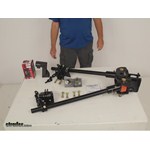




















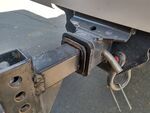
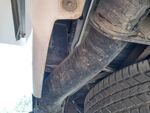
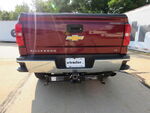
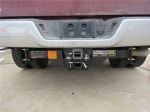
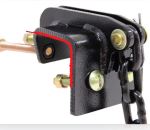



Brooke M.
6/14/2021
Thank you for your review! I wanted to share a link to our help articles that have to do with questions about weight distribution, installation, and more that you might find helpful. Here is that link!
Helpful Links
article-categories.aspx?productgroup=Weight-Distribution